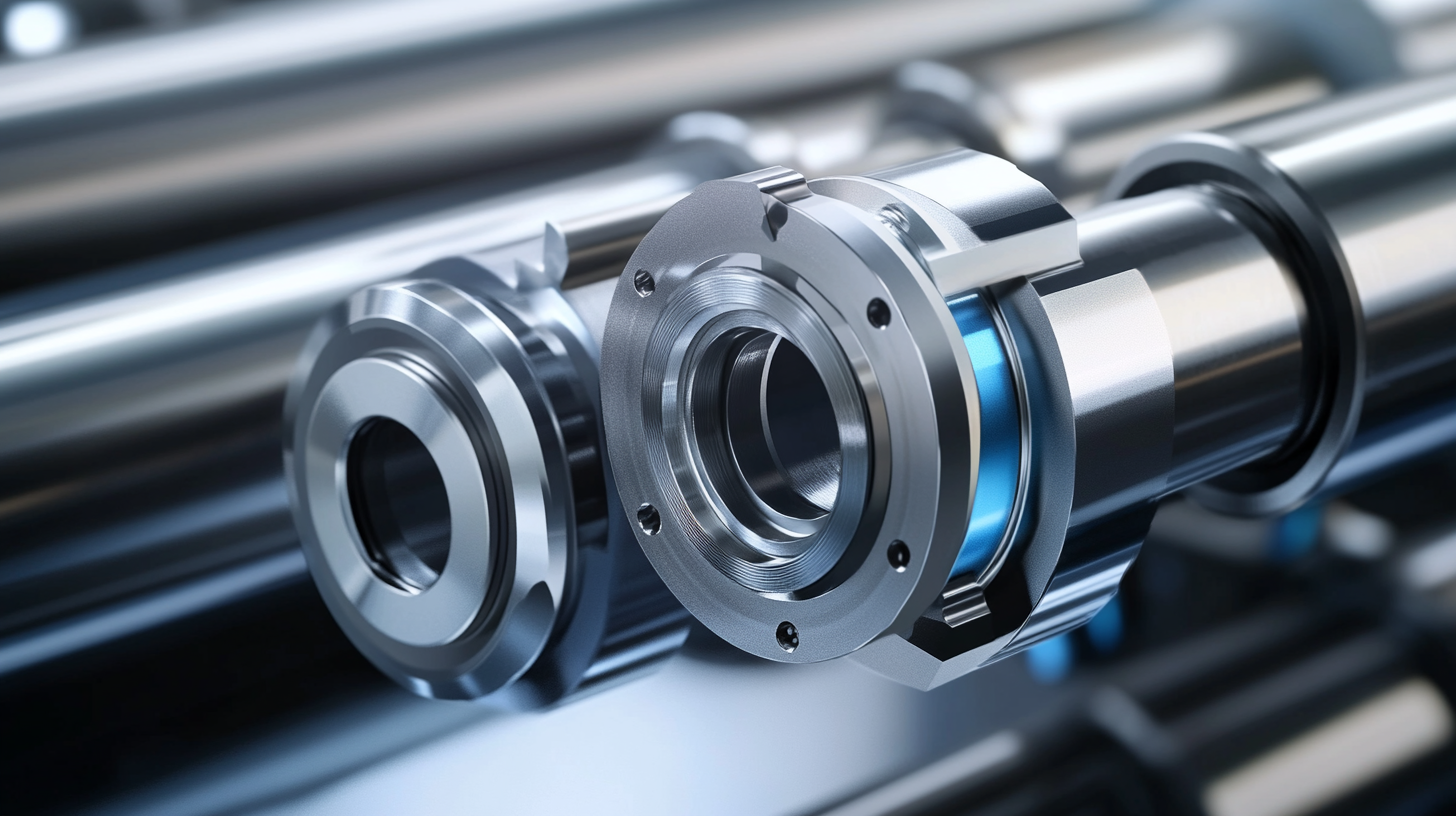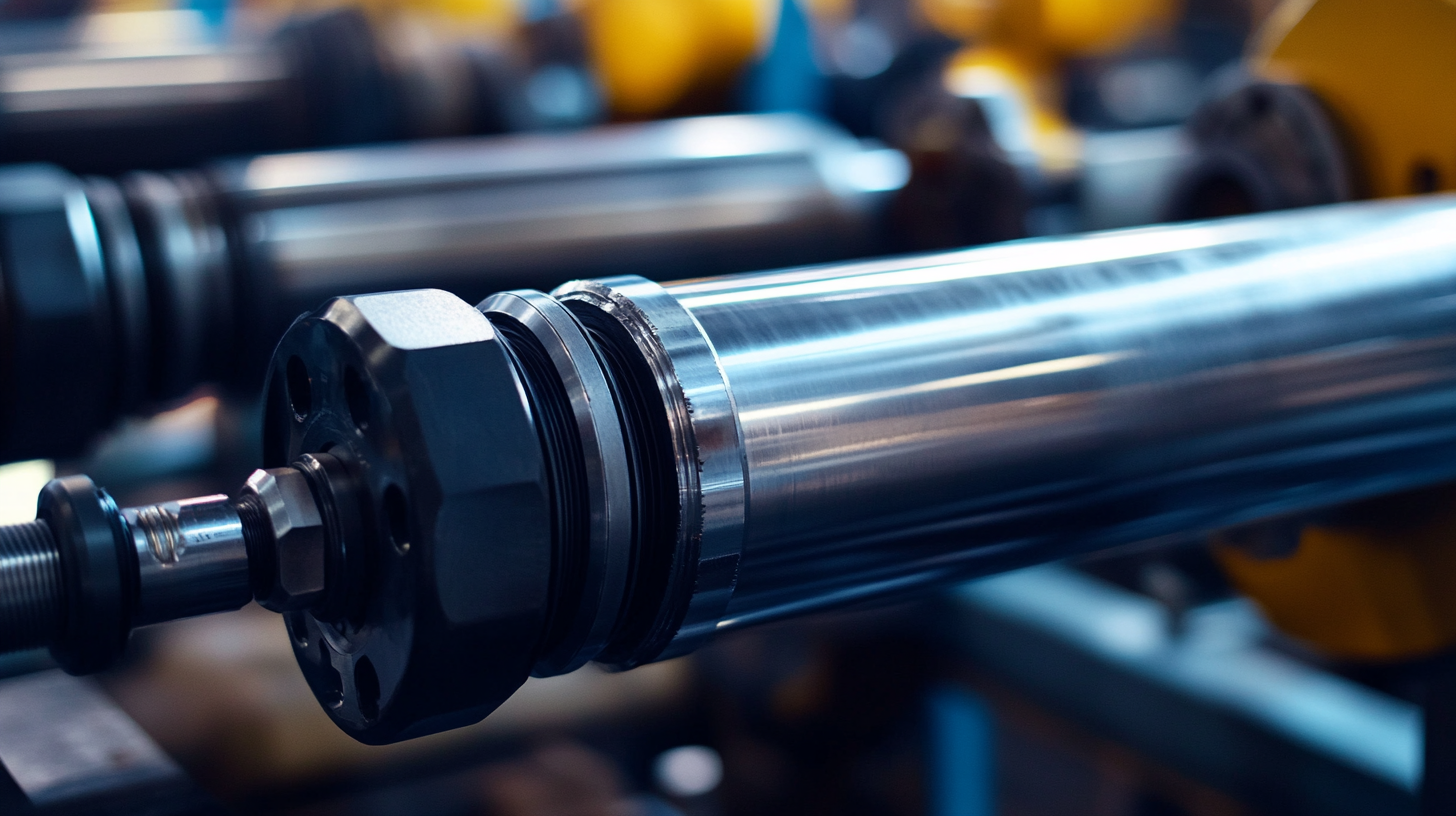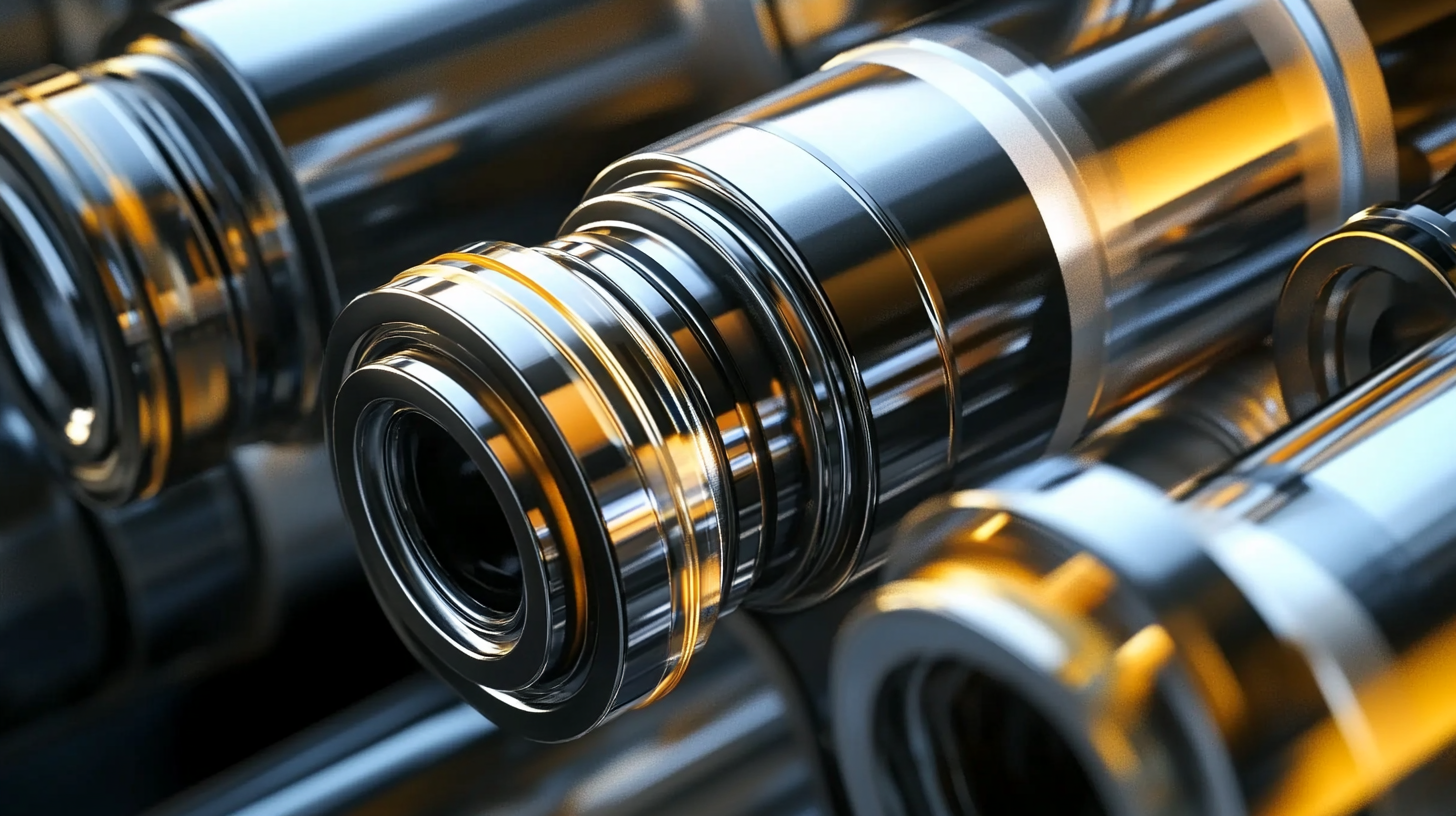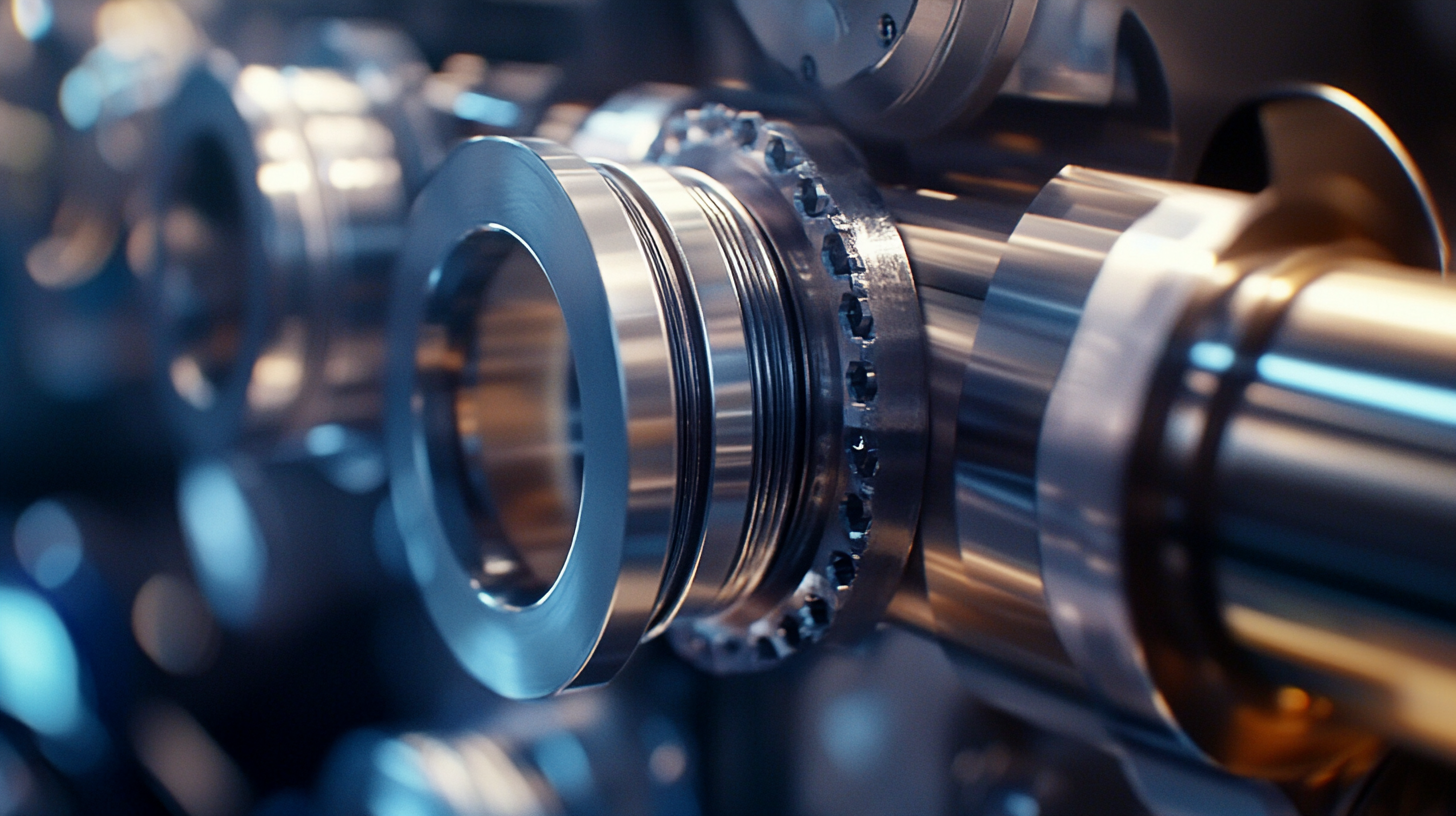How to Choose the Right Hydraulic Cylinder Seals for Optimal Performance
In the world of hydraulic systems, the efficiency and longevity of equipment heavily depend on the quality and selection of components used. One crucial component that often determines the performance of hydraulic cylinders is the seals. According to a report by the Hydraulic Institute, nearly 30% of hydraulic system failures can be attributed to seal-related issues, emphasizing the importance of choosing the right hydraulic cylinder seals. These seals play a vital role in preventing fluid leakage, maintaining pressure, and safeguarding against contaminants, which are all essential for optimal operation in industrial machinery and equipment.
The selection process for hydraulic cylinder seals can be complex, influenced by factors such as operating pressure, temperature, and the type of fluid used. A study by the International Fluid Power Society highlights that improper seal selection can lead to increased maintenance costs, downtime, and reduced efficiency, sometimes amounting to thousands of dollars annually for manufacturers. As such, understanding the different materials, designs, and applications of hydraulic cylinder seals is paramount for engineers and maintenance professionals seeking to enhance system performance and reliability.

Understanding the Functions of Hydraulic Cylinder Seals in Fluid Power Systems
Hydraulic cylinder seals play a crucial role in ensuring the optimal performance of fluid power systems across various applications, including the rapidly growing hydraulic cylinder market, which was valued at USD 14.3 billion in 2021 and is projected to reach USD 18.3 billion by 2027. Understanding the functionality of these seals is essential for engineers and technicians who seek reliability and efficiency in their hydraulic systems. These seals are responsible for preventing fluid leaks, maintaining pressure, and ensuring that the moving parts of the hydraulic cylinder operate smoothly. A well-designed seal not only enhances the performance of the cylinder but also prolongs its lifespan by reducing friction and wear. In high-demand environments, such as Formula 1 racing, the hydraulic systems are sophisticated and integral to the operation of various sub-systems. Here, the importance of selecting the right seals becomes even more pronounced, as any failure can significantly affect car performance. Choosing the right hydraulic cylinder seals involves assessing factors such as the operating environment, fluid compatibility, and temperature variations. High-quality seals designed for specific applications can maximize efficiency and reduce maintenance costs, creating a competitive edge in industries where performance and reliability are paramount.

Key Factors to Consider When Selecting Hydraulic Cylinder Seals
When selecting hydraulic cylinder seals, several key factors must be taken into account to ensure optimal performance and longevity. First and foremost, it is essential to consider the operating conditions of the hydraulic system, including pressure, temperature, and the type of fluid used. Advanced biodegradable hydraulic fluids are gaining popularity due to their sustainability benefits, but they also require compatible sealing materials to maintain performance integrity under varying conditions.
Another critical factor is the design and construction of the seals themselves. The choice between single or multi-stage hydraulic cylinders can significantly impact sealing effectiveness. Multi-stage telescopic cylinders, for instance, provide extensive retraction and extension capabilities, but they also demand more sophisticated sealing solutions to prevent leakage over their full operational range. With the growing push towards zero-leakage technology, selecting seals that align with this standard can further enhance system efficiency and safety.
Additionally, material compatibility cannot be overlooked. The interaction between the seal materials and the hydraulic fluid, especially with the introduction of next-gen biodegradable fluids, plays a crucial role in the sealing performance and durability. Ensuring that the seals are capable of withstanding the rigors of their specific applications while also aligning with sustainability goals will be increasingly vital in the modern industrial landscape. In an era where electric actuators are becoming more prevalent, the need for efficient, reliable hydraulic systems emphasizes the importance of carefully choosing the right seals to maximize any hydraulic application.

Types of Hydraulic Cylinder Seals and Their Applications
When selecting hydraulic cylinder seals, understanding the various types and their specific applications is crucial for optimal performance. There are several categories of hydraulic seals, each designed to cater to distinct operational requirements. Common types include dynamic seals, static seals, and rod seals. Dynamic seals are typically used where there is a relative motion between components, while static seals are utilized in stationary applications. Rod seals, on the other hand, serve to prevent fluid leakage around the piston rod, making them essential in applications where maintaining pressure is vital.
In addition to understanding seal types, it's important to consider the materials used in seal manufacturing. For instance, polyurethane seals are known for their excellent abrasion resistance and flexibility, making them ideal for demanding environments. In contrast, nitrile rubber seals are often chosen for applications involving petroleum-based hydraulic fluids due to their compatibility and durability. Moreover, the sealing design can also impact performance, with multi-stage hydraulic cylinders requiring specialized sealing solutions that accommodate their complex structure and the need for structural safety.
Ultimately, the right seal can significantly influence the efficiency and longevity of hydraulic systems in various applications, from automotive to industrial machinery. A thorough analysis of the hydraulic processes involved and the specific demands of each application will lead to more informed decisions regarding seal selection, contributing to improved performance and reliability of hydraulic systems.

Maintenance Tips for Prolonging the Life of Hydraulic Cylinder Seals
When it comes to hydraulic cylinder seals, maintenance is paramount to ensure optimal performance and prolong their lifespan. Regular inspections and timely replacements can significantly reduce the risk of leaks and failures. According to industry reports, proper maintenance can enhance the life of hydraulic seals by up to 50%, which translates to substantial cost savings in repairs and downtime.
One effective maintenance tip is to monitor and control the operating temperatures of hydraulic systems. Excessive heat can cause seals to degrade rapidly. Components subject to heat soak, such as those under the hood of an engine, are particularly vulnerable. By utilizing materials designed to withstand high temperatures and reduce heat retention, such as advanced sealing solutions, users can mitigate the risks associated with thermal stress and extend the life of hydraulic cylinder seals.
Recent advancements in sealing materials, like those engineered for optimum performance against ceramic coated rods, showcase the benefit of using innovative products specifically designed for durability in harsh conditions. These materials, featuring superior wear and heat resistance, are becoming essential in modern hydraulic applications. Industries utilizing heavy machinery and other equipment can significantly benefit from integrating such high-performance seals into their maintenance routines. Regular assessments and strategic upgrades to sealing materials will, therefore, contribute to the efficiency and longevity of hydraulic systems.
Common Mistakes to Avoid When Choosing Hydraulic Cylinder Seals
When selecting hydraulic cylinder seals, one of the most common mistakes is overlooking the specific application requirements. Each system operates under different pressures, temperatures, and media types, which can significantly affect seal performance. Failing to consider these factors may result in premature seal wear or failure, leading to costly downtime and repairs. It's essential to assess the operational conditions accurately and choose seals that are specifically designed to handle them.
Another common error is not paying attention to the material composition of the seals. Different seal materials possess unique properties that make them suitable for various applications. For example, using nitrile rubber seals in an environment with high temperatures or aggressive fluids can lead to rapid deterioration. Therefore, understanding the compatibility of seal materials with the operating environment is critical. Always refer to manufacturer specifications to ensure that the chosen material can withstand the specific conditions it will face.
Additionally, ignoring the installation procedure can create problems that compromise seal integrity. Improper installation techniques, such as misalignment or inadequate lubrication, can lead to immediate failures. It’s vital to follow best practices during installation, including checking for any sharp edges or contamination that could damage the seals. Investing time in proper installation ensures that the seals perform optimally throughout their intended lifespan, reducing maintenance issues and enhancing overall system efficiency.

